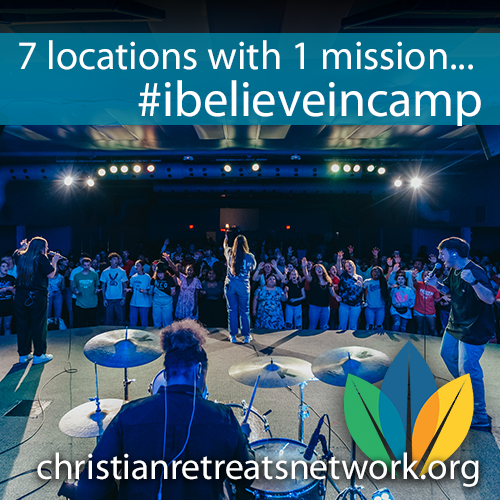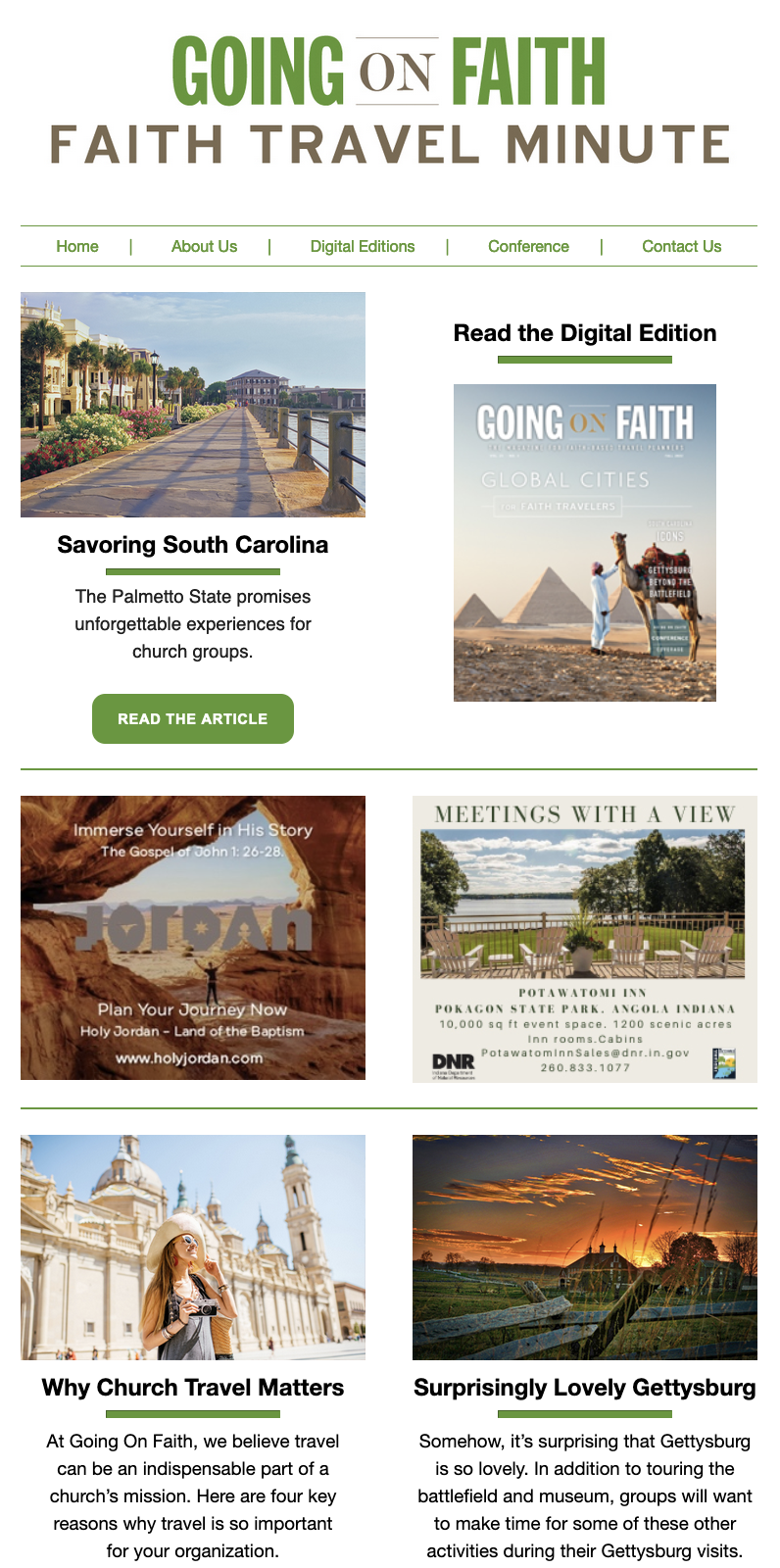Although called the Underground Railroad, the network that helped enslaved people escape the plantations in the South and head toward freedom in the North between 1810 and 1850 was not at all related to trains. The name is a metaphor for what is known as the first great freedom movement in the Americas.
Black freedom fighters and white abolitionists braved extreme danger to help more than 100,000 slaves escape through an incredibly comprehensive hidden network of secret routes and safe havens. Their stories are told at Underground Railroad sites around the country.
Deeply ingrained into the social and historical consciousness of our nation, these tales are a fusion of tragedy, hope, perseverance and inspiration.
National Underground Railroad Freedom Center
Cincinnati, Ohio
Opened in 2004 and located along the Ohio River in the heart of Cincinnati’s appropriately named The Banks district, the National Underground Railroad Freedom Center is a world-class destination.
Permanent and traveling exhibits, interactive gallery spaces and special programming are all part of the experience at the center, which engages visitors in the history of the Underground Railroad from its inception through post-Civil War abolition.
Among the most poignant exhibits here is the Slave Pen. An original structure found on farmland only a stone’s throw from the Freedom Center, it was built in the early 1800s.
Hands-on activities, introspective role-playing and vivid storytelling take center stage in the “Escape! Freedom Seekers and the Underground Railroad” exhibit, and the important issues of human trafficking and modern-day slavery are deftly addressed in “Invisible: Slavery Today.”
“Brothers of the Borderland” showcases the work of the Rev. John Rankin and John Parker, two of scores of anti-slavery activists credited with helping slaves navigate the Underground Railroad.
Additionally, travelers will find a series of in-depth films that are shown throughout the day. The films immerse visitors in subject matter and historical context that is related to today’s social issues, such as implicit bias and the rise in violent attacks on Black, Asian, Hispanic and other communities of color all over the world.
Free personalized assistance is available in the John Parker Library and Family Search Center for those desiring to trace their family trees. And the center offers a wide array of private indoor and outdoor spaces for groups for panel discussions, corporate meetings, lectures and other events.
Harriet Tubman Underground Railroad National Monument & National Historical Park
Dorchester County, Maryland
Leader, freedom fighter, liberator, nurse, humanitarian: Harriet Tubman was all these things and more, and her incredible story is told at the Harriet Tubman Underground Railroad National Monument and National Historical Park in Dorchester County, Maryland.
Born Harriet Ross in 1822, she was a slave from birth, escaping north to freedom after her master died in 1849.
“Harriet Tubman’s first home was the Choptank River Region,” said Dana Paterra, park manager, Harriet Tubman Underground Railroad State Park. “It’s where she loved, worshiped, toiled and ultimately came back to 13 times to rescue friends and family. She learned the values of faith, family, community and freedom that shaped her during her most formative years.”
Harriet was married twice, the first time to free Black man John Tubman. Unfortunately, the couple’s freedom efforts didn’t align, so she later remarried, keeping her Tubman surname.
Through a wide range of permanent exhibits, a film and research library documentation, visitors learn about Harriet’s rescue missions and gain an understanding of the value of her tireless anti-slavery efforts, which ultimately succeeded in helping an estimated 70 slaves escape to freedom.
In addition to a visit here, travelers can also embark upon the Tubman Byway. Meandering over 225 picturesque miles through Maryland’s Eastern Shore and Delaware, this self-guided driving tour, available through a free Harriet Tubman Underground Railroad Byway Tour app, encompasses 45 historically significant Underground Railroad sites. More than just a simple “stop here” guide, the tour includes storytelling, dramatizations and narration by numerous historians, experts and others.
Plans are underway for several yearlong events to celebrate Harriet’s 200th birthday in 2022.
Kelton House Museum and Garden
Columbus, Ohio
Named after three generations of the Kelton family that lived here from 1852 to 1975, the Kelton House Museum and Garden in Columbus, Ohio, is a wonderful repository of decorative arts and Columbus history from the Victorian period. But the story behind the walls is so much richer.
One day, Sophia and Fernando Kelton, who owned the home, encountered two young runaway slaves on their property. Sisters Martha and Pearl Hartway were fleeing north from Virginia to Canada. The Keltons saw that Martha was too ill to continue the journey, so, being opposed to slavery, they took her in. Martha was raised with the Kelton children and lived there into adulthood, and she eventually married Thomas Lawrence, the Kelton’s handyman.
According to Sarah Richardt, executive director of the Kelton House Museum and Garden, their coming together is a much bigger story about neighborhoods, jobs and family.
“Many visitors are struck by the fact that the Lawrence families and the Keltons stayed close through their lives,” Richardt said. “Thomas worked for the family for 37 years. After Thomas and Martha were married, they lived with the Keltons for two more years. Ella Kelton, youngest daughter of the Keltons, and her husband, James Watson, gave property to the Lawrences, and Thomas was even listed in Col. James Watson’s will. Martha named their children after two of the Keltons.”
What visitors find today is a lovingly restored 1852 home that highlights an array of memorabilia, permanent and temporary exhibits and period furnishings; approximately 80% of them belonged to the Kelton family.
In addition to the regularly scheduled tours, groups can opt for a private tour or arrange a special event on the garden grounds.
John Brown Farm State Historic Site
Lake Placid, New York
The John Brown Farm State Historic Site in Lake Placid, New York, offers great insight into both the beauty of the Adirondack Mountains and the ugliness and loss of life that took place during the anti-slavery conflicts in this country.
It was here that abolitionist John Brown lived and was ultimately laid to rest in 1859. Staunchly opposed to the practice of slavery, he famously led a coordinated attack at the U.S. Arsenal at Harper’s Ferry in West Virginia in an attempt to procure arms to help free slaves in the South. But his failure, imprisonment and hanging are only part of the story.
Although many visitors to the site believe that this was a major stop along the Underground Railroad, it was really an open African American settlement called Timbucto.
“This far north, no [secret hiding places] were needed to aid freedom seekers,” said Brendan Mills, site manager and interpretive program assistant. “The land grantees who settled in the area were all citizens of New York State. They were given land here by a wealthy benefactor in an effort to obtain voting rights. On my tours, I tell people that we only have evidence of two freedom seekers coming through here on the Underground Railroad.”
The beautiful grounds highlight spectacular open meadows, verdant forests, sweeping vistas and soaring peaks. The visitor center features exhibits about Brown’s life and legacy, as well as the Timbucto African American colony. Brown’s historic home and gravesite are part of the tour experience, and groups can also take advantage of a series of special programs, concerts and symposia.
parks.ny.gov/historic-sites/johnbrownfarm
John Freeman Walls Historic Site and Underground Railroad Museum
Ontario, Canada
In the area of the Refugee Home Society, the Puce River settlement approximately 20 minutes from the Detroit/Windsor border in Ontario, Canada, the John Freeman Walls Historic Site and Underground Railroad Museum is named after a slave from North Carolina who purchased the two-story cabin in 1846 for himself and his wife. The two raised nine children there.
Opened to the public in 1989, it is the only Underground Railroad site in the world founded, owned and run by direct descendants of a fugitive slave.
“The story of our destination and the personal struggles of my family, from enslavement in the United States to freedom in Canada, is based on a true story that I carefully researched,” said Bryan Walls, great-great grandson of John Freeman Walls and founder and president of the site and museum and the Proverbs Heritage Organization. “In the overall Black history story in the African diaspora, it represents an important and significant terminal of the Underground Railroad in North America.”
The Historic Walkway symbolizes what escaped slaves may have waded toward: freedom. The Simcoe Building, a log cabin built in 1798, honors the first lieutenant governor of Upper Canada, John Graves Simcoe, who was instrumental in helping to pass Canada’s first anti-slavery law.
The Freedom Train represents the end of the Underground Railroad line in Canada, and the Peace Chapel features elements honoring Martin Luther King Jr. and civil rights activist Rosa Parks.
The Walls Family Cemetery is the final resting place of John Freeman Walls, his wife and over three dozen family members, runaway slaves and others.
Guided tours are often conducted by direct family descendants, and special events for groups and others include gospel and other music concerts.
Fort Mose Historic State Park
St. Augustine, Florida
Chartered in 1738 by the Spanish governor of Florida and originally named Gracia Real de Santa Teresa de Mose, Fort Mose (pronounced “MO-say”) was this nation’s first legally sanctioned free African settlement. Although it was the first stop along the Underground Railroad in this area, the fort became a multicultural sanctuary.
“It was an interesting society during the Spanish period,” said Christina Parrish Stone, executive director of the St. Johns Cultural Council. “At one point the Spanish government required that if [slaves] came to Fort Mose, they could be free, but they had to serve in the militia and become Catholic. Native American, Spanish and African Americans all lived together and fought in significant battles, including against [English military leader] James Oglethorpe, who was ultimately forced back to Georgia.”
Fort Mose spans some 40 acres along marshy waterfront just north of St. Augustine. The visitor center and museum feature an overview film, artifacts, historic maps and interactive audio and video stations and exhibits.
The park grounds offer interpretive signage, hiking trails, a kayak launch, picnic areas and an observation and birding boardwalk. A replica fort and an app about the Flight to Freedom are also in the works.
Designated as a National Historic Landmark and a UNESCO World Heritage Site, listed on the National Register of Historic Places and part of the Gullah Geechee Heritage Corridor, Fort Mose also offers several special events for individuals and groups, including ranger-led tours, monthly cannon firings and the annual Battle of Bloody Mose and Flight to Freedom, which features re-enactors that portray escaped slaves who came to the fort about 1740 when Oglethorpe and his army attempted to capture it.
floridastateparks.org/parks-and-trails/fort-mose-historic-state-park
Levi and Catharine Coffin State Historic Site
Fountain City, Indiana
For 20 years, the Coffin House, an eight-room, Federal-style brick home built in Fountain City, Indiana, in 1839, belonged to Levi and Catharine Coffin, members of a strong Quaker community adamantly opposed to slavery. Earning the nickname the Grand Central Station of the Underground Railroad in east central Indiana, the home provided shelter, food and support to over 1,000 former slaves escaping the South on their way north to freedom.
It wasn’t far from three other heavily traveled Underground Railroad routes, a boon for the Coffins’ efforts. A typical house from the outside, the Coffin home had a large attic, a well and kitchen in the basement, and other special features inside.
According to Joanna Hahn, central regional director of Indiana State Museum and Historic Sites, Indiana’s proximity to Kentucky, then a slave state, was an attractive feature.
“[Indiana] had many free Blacks settling after gaining freedom from slavery in states such as Virginia and North Carolina,” she said. “The state also attracted white settlers who were anti-slavery. Newport was a community not only willing to take in freedom seekers but was also open to allowing some to join their community. The site works to bring those stories and their voices to the public. We try to understand why some chose to stay, even though they were legally still considered fugitive slaves.”
Groups can watch an orientation video and see a self-guided exhibit in the interpretive center, hear stories of those who assisted the slaves and take a guided tour of the Coffin home. From May through September, special walking tours of Fountain City highlight other homes and town residents who worked with the Coffins and helped make the town a center for anti-slavery work.
indianamuseum.org/historic-sites/levi-catharine-coffin-house










